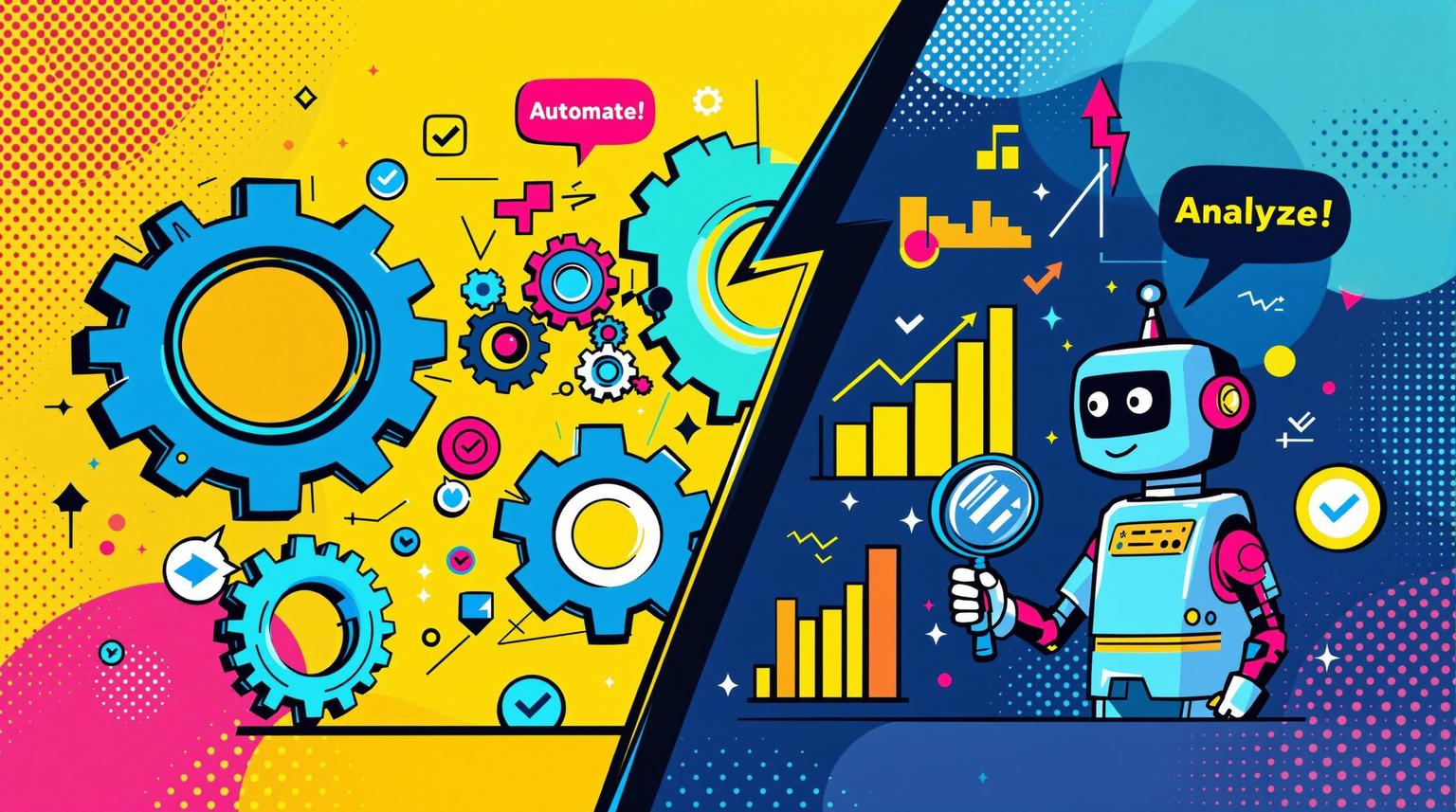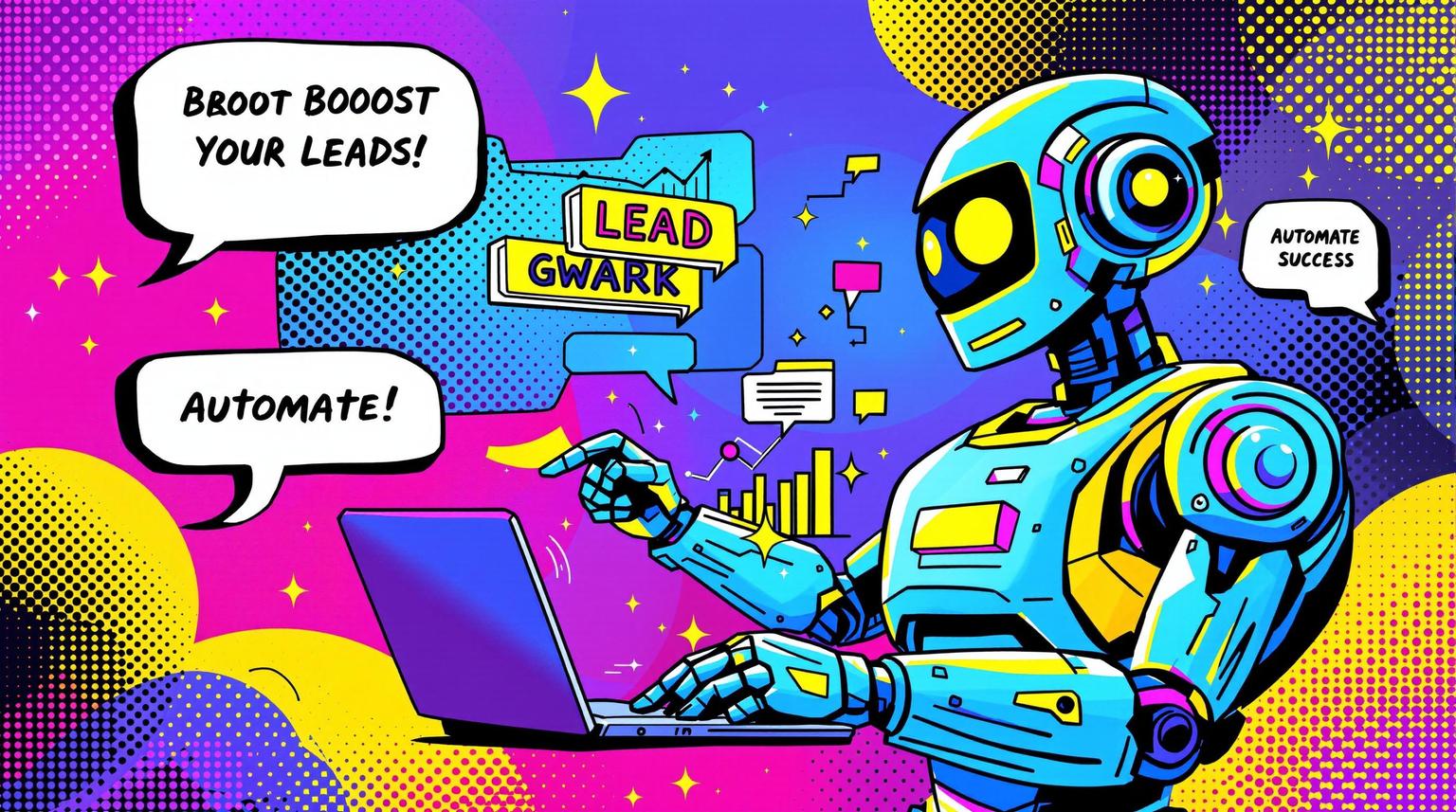AI agents are changing how businesses approach marketing, helping teams save time and improve results through automation and data analysis. Here’s what you need to know:
- When to Scale: Look for proven success in test projects, strong data systems, and a prepared team. Indicators include increased organic traffic, steady growth, and operational readiness.
- Why Use AI Agents: They handle tasks like content creation, lead management, and campaign adjustments. Benefits include faster processes, better customer insights, and improved efficiency (10–20% boost in productivity).
- How to Scale: Start small with pilot programs, track performance metrics, and grow in phases. Maintain human oversight to balance automation with creativity.
Quick Tip: Companies like T3 Services Group reduced content creation time by over 80% using AI. Success comes from combining AI tools with clear goals and team collaboration.
Automate, Scale & Connect: The Future of AI-Driven Marketing
Signs You're Ready to Scale
Before scaling your AI operations, it's crucial to assess key indicators. Research shows scaling at the right time can boost efficiency by 10–20%. However, moving too early - or too late - can hurt your progress.
Proven Results from Test Projects
Take T3 Services Group as an example. They achieved impressive results by implementing AI:
- Website launch time dropped from 8 weeks to under 1 month.
- Service page creation was cut from 2 weeks to just 3–4 days.
- Blog content creation went from 4–8 weeks to only 4 days.
- Per-page creation time decreased from over 60 minutes to just 8 minutes.
Companies with a Domain Authority score above 30 often see better outcomes when scaling AI marketing efforts. But beyond initial success, ensure your systems can handle the increased workload.
Data Systems and Integration
Your technical setup must be ready to handle expansion. Studies reveal that 70% of agencies encounter integration challenges, and 96% of organizations face obstacles in fully leveraging AI.
Here’s what you’ll need:
| Data Requirement | Purpose | Impact |
|---|---|---|
| Data Organization | Structured access for AI | Higher accuracy |
| Integration Capability | Smooth communication between systems | Faster processing |
| Quality Control | Reliable input data | Better outcomes |
| Cloud Infrastructure | Scalable computing power | Improved performance |
Team Preparation
Scaling isn't just about technology - it’s also about people. A capable team is essential. With 85% of marketing agencies reporting a lack of in-house expertise, you’ll need specialists like data scientists, AI experts, marketing strategists, and quality controllers to ensure success.
Market Signals
Market trends are another critical factor. Contact Studios, for instance, doubled their content production speed while maintaining quality by using AI-driven workflows.
"Leadership positions are maintained through systematic expansion and consistent quality. Use AI to amplify your existing advantages rather than trying to reinvent your approach." – AirOps Team
Key signals that you’re ready to scale include:
- A 30% increase in organic traffic from regular content updates.
- Consistent month-over-month growth.
- The discovery of underserved market segments.
- A strong operational foundation.
Deepgram’s success story highlights what’s possible. They scaled effectively, achieving a 20× traffic increase by systematically leveraging AI for startup profiling.
Benefits of Multiple AI Agents
Using multiple AI agents enhances marketing efforts by combining automation with real-time data analysis. This approach supports a step-by-step growth strategy that ensures long-term success.
Lead Management at Scale
AI agents can craft personalized nurture programs that respond immediately to how prospects interact with your brand. By tracking engagement across various channels, these systems adjust messages, timing, and content to move prospects smoothly through the sales funnel. This process improves lead qualification and provides sales teams with detailed engagement histories. The result? A better understanding of customer behavior and needs.
Data-Driven Customer Analysis
Modern AI tools process massive amounts of customer data from different sources at the same time. This capability helps businesses uncover key insights and target customers more precisely. For instance, in banking, AI-driven customer segmentation has boosted conversion rates by 30%. These systems can:
- Combine data from multiple sources
- Spot behavioral trends
- Predict customer actions
- Highlight emerging market patterns
Campaign Performance Updates
By analyzing customer data, multi-agent systems can adjust campaigns on the fly. NexelTech's use of such a system shows how real-time insights can improve brand visibility and allow quick responses to market changes.
Resource Efficiency
AI agents also improve efficiency in several areas:
| Efficiency Metric | Improvement | Source |
|---|---|---|
| Overall Productivity | 10–20% increase | |
| Processing Speed | 60–80% faster | |
| Conversion Rates | Over 30% boost |
For example, CogniBee saw a 30% rise in conversion rates while reducing workloads thanks to deploying multiple AI agents.
"By automating the more mundane elements of marketing - such as data entry and basic consumer analysis - our team can focus on what humans do best: creative problem-solving and innovation."
– Sarah Lin, Content Marketing Specialist
sbb-itb-3fa07bc
Step-by-Step Scaling Guide
Review Current Systems
Start by assessing your current systems. A Domain Authority score of 30 or higher often signals you're ready to scale. Look at metrics like organic traffic, keyword rankings, content performance, and infrastructure capabilities. Did you know outdated content can reduce organic traffic by up to 15% annually?. Once you've completed this review, the next step is finding tools that work well with your existing setup.
Choose Compatible Tools
Pick AI tools that fit seamlessly into your current marketing stack.
"The process automation AI agents offer is unprecedented. AI tools streamline data analysis and testing, optimizing ad spend and ROI." - Dr. Michael Chen, Professor of Marketing and Technology
Companies using integrated AI solutions have reported 10–20% gains in efficiency and productivity.
Add Agents in Phases
Scaling works best when done in stages. Here's how to approach it:
- Pilot Program Launch: Test AI tools on one marketing function to identify any challenges and gather feedback.
- Performance Assessment: Track metrics like agent success rate, task completion time, output quality, and cost efficiency.
- Team Integration: Collect feedback from your team before rolling out the tools to other departments.
Track Results
Use a balanced scorecard to monitor progress effectively:
| Metric Category | Key Indicators | Purpose |
|---|---|---|
| Technical Performance | Agent Success Rate, Tool Selection Accuracy | Check operational efficiency |
| Business Impact | ROI, Cost per Task Completion | Measure financial performance |
| Quality Metrics | Output Accuracy, Instruction Adherence | Ensure consistent quality |
Keep Human Control
AI tools are meant to support - not replace - your team. Maintain control by:
- Conducting regular performance reviews
- Setting clear limits on AI decision-making
- Providing ongoing training and strategic planning for your team
The goal is to stay focused on your core business objectives while balancing automation with human expertise.
Managing Larger AI Systems
Performance Tracking
Keep tabs on AI performance by focusing on key metrics that ensure efficiency and effectiveness. Here's what to track:
| Metric Category | Key Indicators |
|---|---|
| Technical | Agent success rate, tool selection |
| Business Impact | Cost per task, overall ROI |
| Quality Control | Output accuracy, consistency |
| Resource Usage | Token optimization, processing time |
Once these metrics are in place, it's time to address compliance requirements.
Rules and Regulations
Staying compliant isn't optional. With 72% of customers now aware of AI interactions, it's more important than ever to put safeguards in place.
"AI compliance focuses on adherence to existing laws, regulations, and standards that apply to artificial intelligence (AI) systems." - AI Guardian
After compliance, the next step is ensuring your team works cohesively within the AI framework.
Team Integration
For scaling larger AI systems, human-AI collaboration plays a critical role. Focus on these strategies to integrate your team effectively:
- Cross-Department Collaboration: Create AI task forces that unite marketing, technology, and analytics teams. Regular bias audits and open communication help foster trust and manage ethical concerns.
- Training and Development: Offer ongoing, hands-on training sessions to teach team members how to use AI tools effectively. Regular updates ensure they stay ahead of changes and maximize AI's potential.
Controlled Growth
Scaling up should always align with your business goals. Use structured frameworks and tiered processing to maintain efficiency and accuracy. Key steps include:
- Adjust resource usage and scaling plans as needed
- Apply tiered processing based on task complexity
- Leverage parallel processing for better performance
- Keep detailed records of system updates and changes
In industries like healthcare, these methods have resulted in faster processing and improved compliance accuracy. Regularly evaluate how your system performs against your business objectives to ensure continued success as you grow.
Conclusion
Scaling AI-driven marketing requires a careful mix of automation and human expertise. Data shows that a thoughtful approach is crucial for effective growth.
Here are three key focus areas to keep in mind:
System Integration and Governance
Creating an AI Council with representatives from multiple departments ensures proper oversight of marketing initiatives and safeguards brand identity. Regularly revisit and adjust guidelines as AI tools advance.
Team Development
With 85% of agencies reporting skill gaps in their teams, investing in training is essential.
"The process automation AI agents offer is unprecedented, seamlessly integrating tasks that used to take teams of analysts weeks to complete... Companies leveraging AI agents in their marketing operations can adapt to market changes faster and more efficiently than their competitors." - Dr. Michael Chen, Professor of Marketing and Technology
Performance Monitoring
Consistently track AI's performance to ensure it aligns with business goals. This approach prioritizes measurable results while keeping human creativity central to marketing efforts.
"By automating the more mundane elements of marketing - such as data entry and basic consumer analysis - our team can focus on what humans do best: creative problem-solving and innovation." - Sarah Lin, Content Marketing Specialist
These pillars are essential for building a marketing strategy that can grow and adapt over time, combining the best of human ingenuity and AI capabilities.



